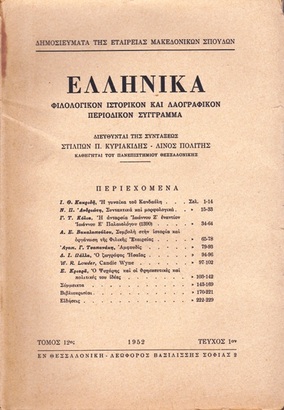«'Ακτίνα τ' ουρανού χαριτωμένη...» : Παρατηρήσεις στο Δ' χορικό της Έρωφίλης
Part of : Ελληνικά : φιλολογικό, ιστορικό και λαογραφικό περιοδικό σύγγραμμα ; Vol.48, No.2, 1998, pages 267-282
Issue:
Pages:
267-282
Parallel Title:
Remarks on Erofili's Fourth Choric Ode.
Author:
Abstract:
The Cretan tragedy Erofili, written by Georgios Chortatsis shortly before 1600, follows in both plot and structure Giambattista Giraldi's Orhecche (1547). Nevertheless, the first part of Erofili's fourth choric ode, a «Hymn to the Sun», derives from a choric found in Giangiorgio Trissino's Sofonisba (written in 1515, printed in 1524 and 1529). By emphasizing affinities in both phraseology and content, the article concludes that Trissino's choric was influenced by a «Sun Hymn» found in Cleomedes' Meteora (or Caelestia, first century A.D.) in the Latin translation by Giorgio Valla (first published in 1498). In addition, Trissino and Chortatsis can be shown to employ the literary motif of the sun as creator, nourisher, and power of benevolence, a motif which is traced back to antiquity and the Middle Ages. It is further suggested that Chortatsis also drew on a Greek source, which was not, as might be assumed, Cleomedes' Hymn in the original, but one of its derivatives (recognized as such for the first time), namely Oration N, the Hymn to King Helios by the Emperor Julian (first published in 1583). A linguistic analysis of Chortatsis' Sun Hymn, on the other hand, reveals a significant number of italianisms. Considering all this, together with the impact on the Erofili of Giraldi's and Trissino's plays as well as their of views on language and on drama, the article suggests, insofar as a generalization is justifiable, that direct influence of Ancient Greek literature upon the Cretan poet was slight.
Subject:
Subject (LC):




